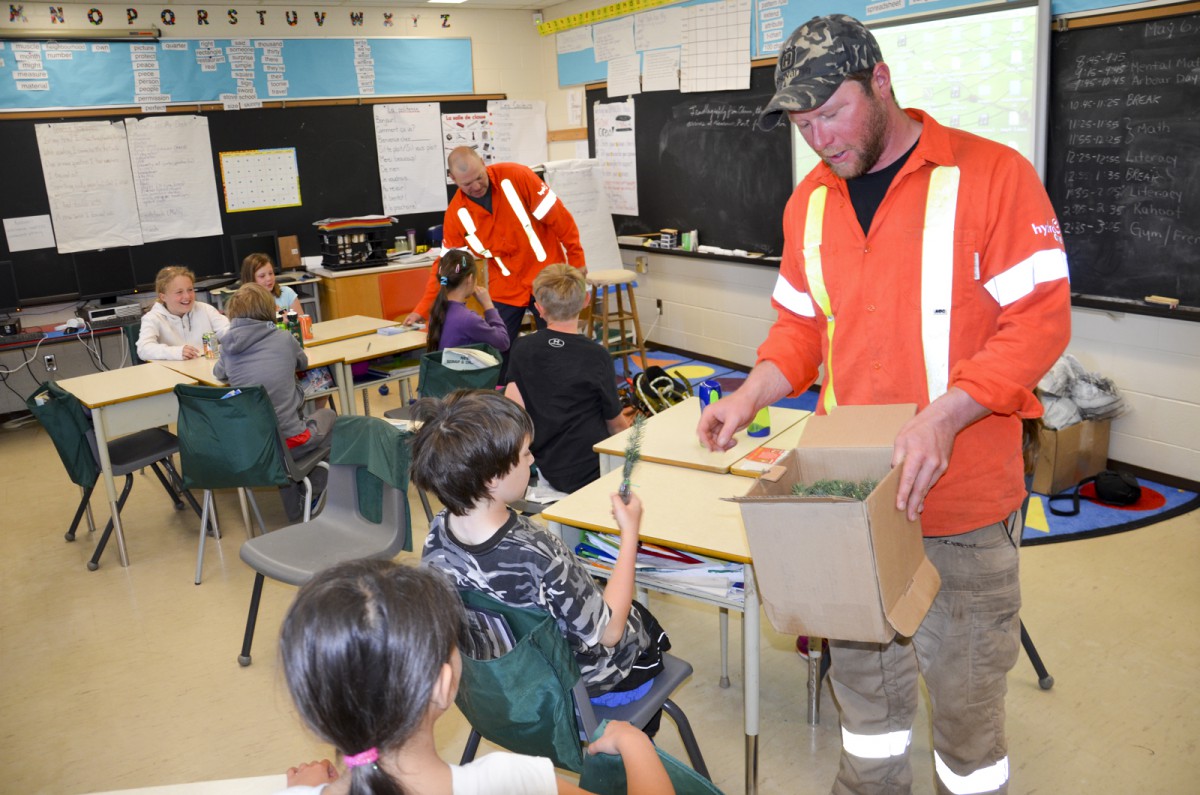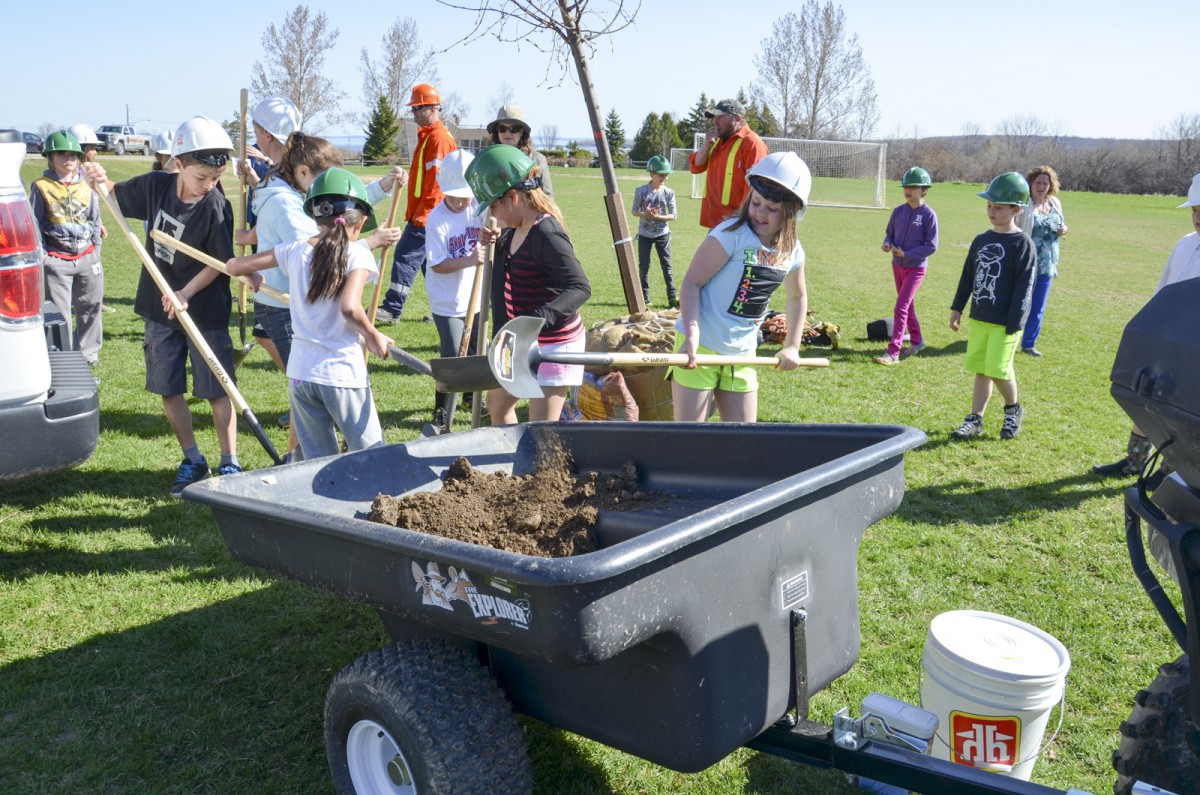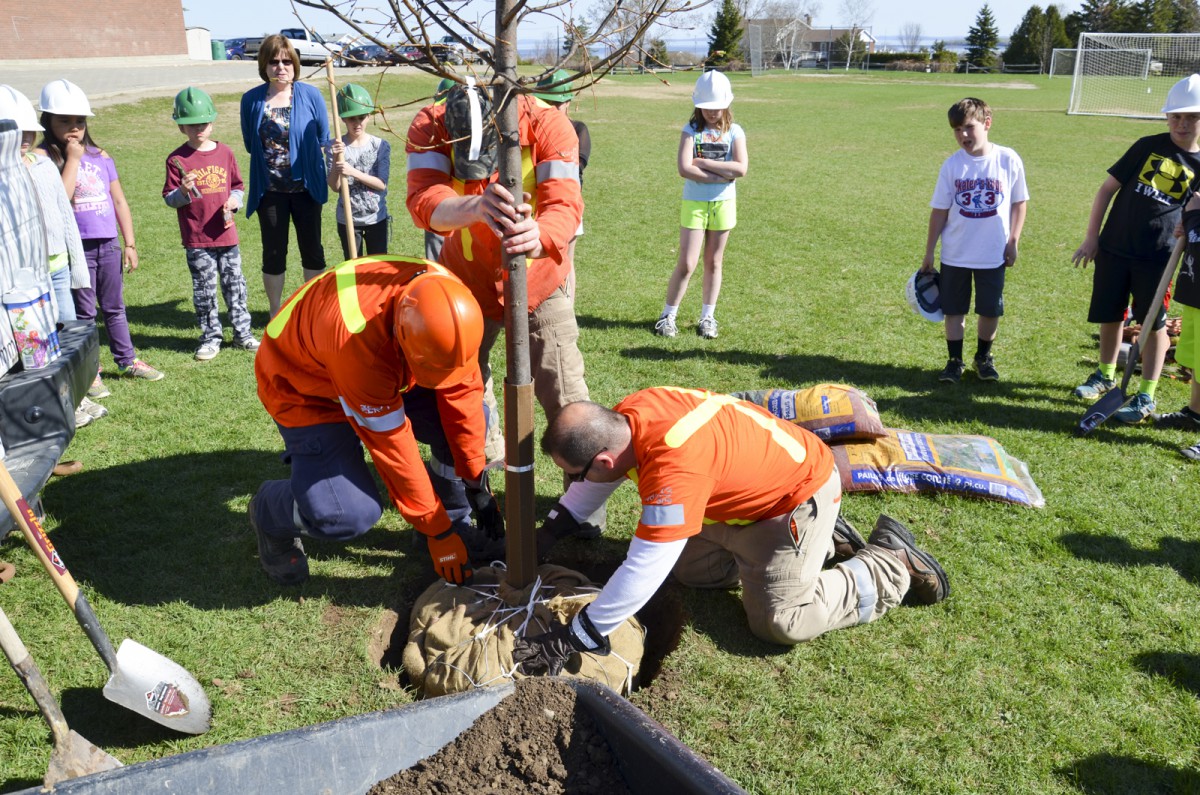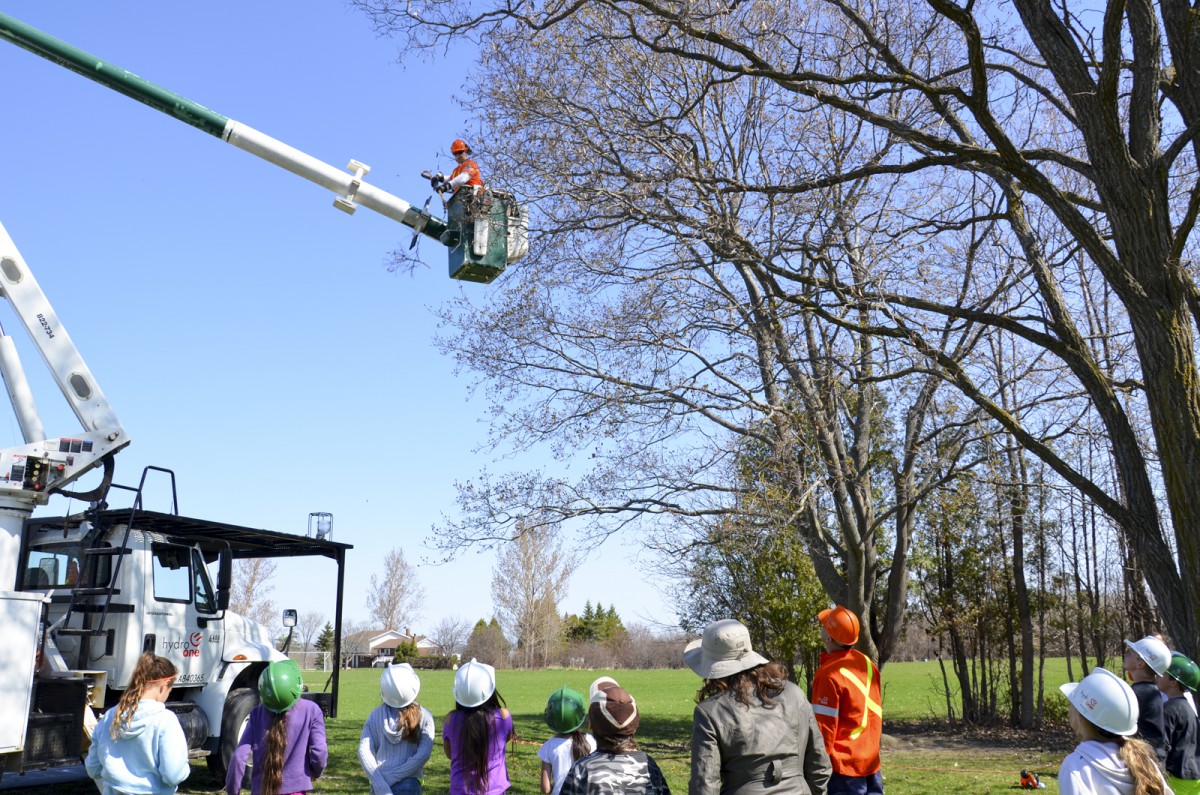ASSIGINACK—“We get to drive a lot of neat equipment,” admitted Hydro One Regional Forestry Technician Dan Todd under cross-examination by the Grade 4 students at Assiginack Public School during an Arbour Day presentation. The Hydro One employees delivering ‘Arbour Week: Celebrating Trees for a Greener Future’ presentation kept students hanging on their every word.

Mr. Todd was joined by fellow Hydro One forestry crew members Area Forestry Technician Steven Dey and Regional Forestry Technician Chris Valley in the Grade 4 classroom at Assiginack Public School as they spoke about their careers.
“Every year Hydro One puts on a presentation at schools across the province,” said Mr. Dey. “This year, for this area, Assiginack Public School Grade 4 class has been chosen.”
Mr. Dey noted that the Hydro One presentation includes “in class presentations on tree biology, the value of trees to wildlife and society, hydro line awareness and showing some of the tools of the forestry trade.”


students
Mr. Dey noted that the first Arbour Day was founded in 1872 by J. Sterling Morton in Nebraska and that the day is now celebrated in many countries around the world and that its purpose is “to recognize the important role trees play in our ecosystem and “our growing concern for the environment reinforces the spirit of Arbour Day.” The forestry tech noted that the goals of Arbour Week are: “to educate people about trees and their benefits for our environment and to encourage tree planting.”
The forestry techs encouraged an interactive discussion with the students, asking the question “why are trees important to the environment?” The answers supplied by the students were pretty on the mark, including that they “prevent soil erosion, reduce noise pollution, filter water that enters our streams and rivers, clean impurities out of the air and give us oxygen.”
The importance of trees to wildlife include providing benefits such as nesting areas for birds, hollows for squirrels, bats and raccoons, a hiding place for predators, and source of food, including nuts, berries and leaves.
For humans, trees provide shade, windbreaks, building supplies, firewood, food (including nuts, berries, fruits and, yes, maple syrup!). “Trees also make our yards more attractive and are beautiful places for camping and hunting,” said Mr. Dey.
The arbourists explained the process of photosynthesis with diagrams and charts that graphically outlined the processes involved.
The team explained what Hydro One does and how they interact with the forest. “We build, operate and maintain the power lines and stations that deliver electricity to homes, farms and businesses across Ontario,” said Mr. Dey. “We trim or remove tree limbs and tall vegetation away from power lines so they don’t interfere with the wires and so children can climb trees too close to live wires.”
The message of staying clear of power lines, on the poles and/or downed by storms or accident was reinforced regularly throughout the presentation by the techs, who explained the importance of the specialized equipment and safety protocols that help them stay safe in a very dangerous work environment.
But although great care must be taken in the course of their work, the passion and love of their occupations came through loud and clear as the forestry technicians described their work. Photographs from the field showed some of the amazing things they see while working in the forest, including elk, fawns, egg clutches hidden amongst the leaves and on the ground.
The team also had a number of pictures that showed the many types of “neat equipment” alluded to by Mr. Todd, along with stories of operating that equipment through flooded rivers and streams, across muskeg and swamp, through blizzards and rainstorms, that make the dedicated Ontario Hydro One forestry and line crews the envy of the world.

“Sometimes when lightning hits a tree, it goes in a spiral or splits the tree,” explained Mr. Todd. From those spirals or splits the cause and ignition point of forest fires can often be determined.
“Once, when we were up in Timmins, the water was all the way up to here,” said Mr. Valley, pointing to a spot barely below the cab on an all-terrain vehicle.
But better than stories and pictures, the forestry techs had on hand some of the equipment they use in their trade for the students to investigate, including tree climbing harnesses, boots and ropes. But it got better.
Following the in-class portion, and the distribution of gifts of tree seedlings and pencils to the students (and the adorning of green and white hard hats), the class followed the techs outside where they helped dig a huge hole for a large tree the Hydro One workers had brought along to help celebrate Arbour Week.
Once the students had shovelled the dirt out of the hole, the forestry techs manhandled the tree into the hole, added bone meal to assist with growth and carefully repacked the roots with earth, covering the dirt with a solid bed of mulch and watering liberally. “Always make sure that you create a dip by the tree trunk down to the root ball,” said Mr. Dey, pointing out that the mulch should never be banked against the trunk.
The students then followed the techs over to where the Hydro One boom truck was waiting. Mr. Todd donned a climbing harness while Mr. Dey and Mr. Valley explained how the teams work in the forest. Mr. Todd demonstrated the tying of the double becket or becket hitch knot and a Blake’s hitch. “Forestry techs have to know how to tie a large number of different types of knots in their work,” explained Mr. Todd. The importance of the knots was demonstrated a few moments later as he nimbly climbed up the trunk of the tree, moving the knot ahead of him as he climbed, his body almost horizontal to the trunk. With the ropes in place, Mr. Todd was able to wander out onto slight branches that could not bear his full weight.
Following Mr. Todd’s demonstration, Mr. Valley clambered into the boom truck bucket and, hoisted aloft with Mr. Dey at the controls, he deftly clipped tree branches to demonstrate the power clippers used by the techs. Each piece of equipment, it was explained, is crafted of non-conductive materials to prevent electricity from flowing down to harm the workers.
Following the demonstrations to the Assiginack students, and a photo op with the class, the Hydro One techs repeated a shorter version of their outdoor demonstrations for students from Little Current Public School who had arrived by bus for a career fair being held that day at Assiginack Public School.






